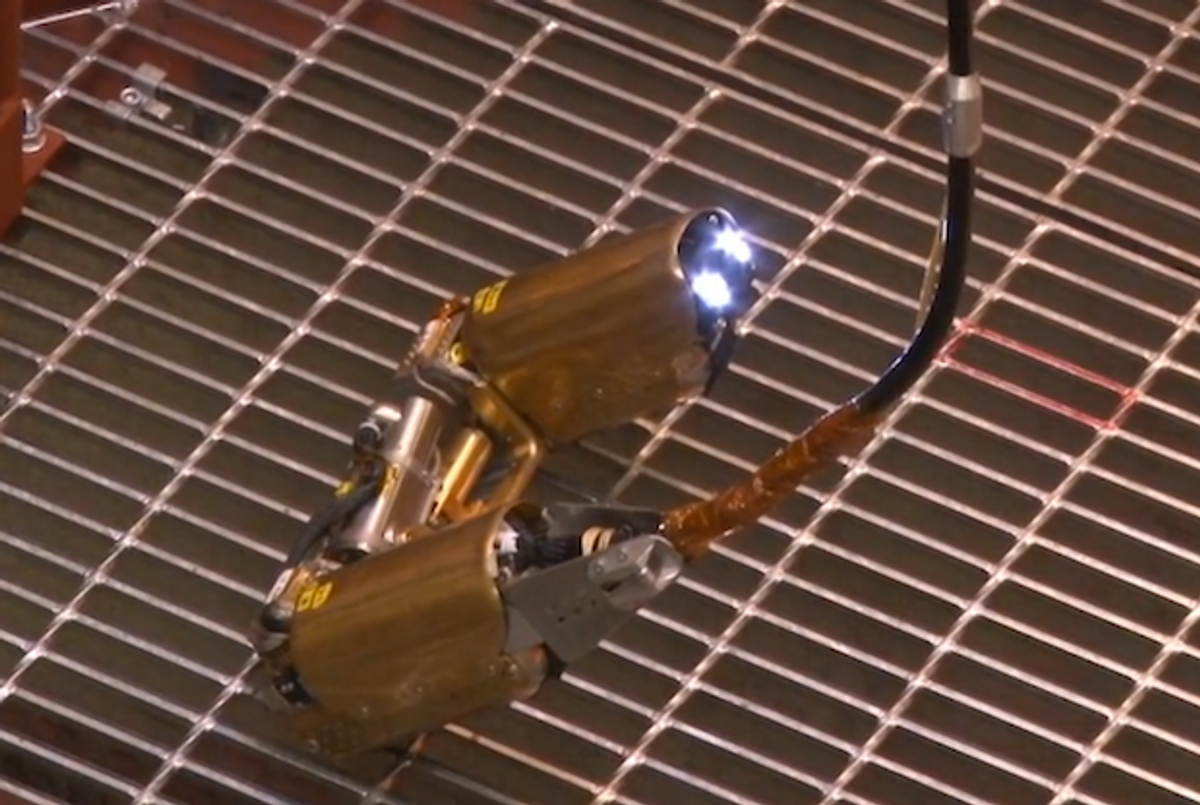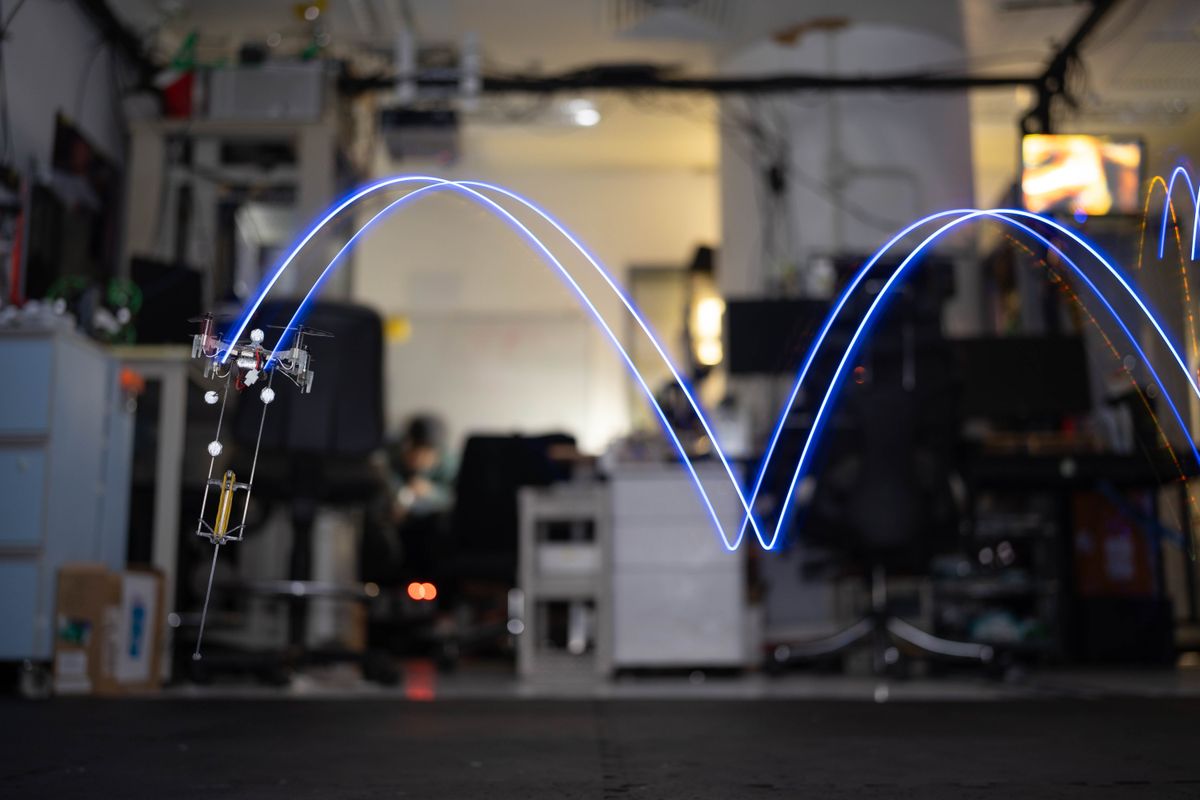It’s a really, really bad day to be a radiation hardened, shape-changing disaster exploration robot. Last week, TEPCO sent a robot deep inside the radioactive hunk of slag that used to be the Fukushima No. 1 nuclear reactor to try to find the fuel rods, which are, uh, missing (looks like they’ve fallen to the bottom of the reactor). Unfortunately for TEPCO, and for that poor little robot, it got stuck after approximately five hours, and will probably remain entombed where it lies until approximately forever.

As far as I can tell, this robot doesn’t even have a name, which just compounds the sadness of the whole situation. It was developed by the International Research Institute for Nuclear Decommissioning (IRID) and Hitachi specifically to get deep inside the primary containment vessel of Fukushima Unit 1 via a 10-centimeter wide access pipe.
Once through the pipe, the robot used a tether (also carrying power and data) to lower itself onto a grating near the very bottom of the containment vessel. There, it stabilized itself by bending into a “U” shape, with treads on each leg of the “U” and a camera in the middle, and started exploring. Here’s video of a test run at a site that replicates the original one:
In 2011, TEPCO used PackBots to explore some parts of the Fukushima site after the disaster. The new robot traveled into much harder to reach areas and sent back pictures and video, along with measurements of temperature and radiation levels. Temperatures were mostly stable, between 18 and 20 degrees Celsius, and radiation dose rates were between 4.7 to 9.7 Sieverts per hour, which is pretty much guaranteed to kill you. Here’s what the robot saw:
Part of the robot’s job was to figure out if there was open access to the bottom of the steel pressure vessel, so that an amphibious robot can be sent down to look for the fuel rods, which simulations suggest are probably in a melted death puddle at the very bottom of the chamber, although nobody knows for sure. TEPCO says the robot was able to determine that “there are no obstacles around the opening that leads to the bottom of the [vessel].”
The robot continued on, until about three quarters of the way through its planned route (five hours into the mission), when it ran into a piece of debris and had to take a detour. At that point, the robot stopped responding to commands, although it continued to send back data. TEPCO thinks that the robot’s little treads probably got stuck on a gap around the grating. Here’s a diagram of where the bot made it to, alongside its original route:

A mockup of the area shows the gap where a tread might have gotten stuck:

TEPCO has already given up on recovering the robot, and by the time we publish this article, they’ll probably have cut its tether to make room for another, similar robot that will explore around the other side of the containment vessel. For what it’s worth, even if the robot had made it back alive, it would have been so radioactive that TEPCO would have immediately stuffed it into a shielded box and then probably buried it somewhere marked with all kinds of scary warning signs.
Despite the fact that the robot got stuck, TEPCO is still calling this mission a success, citing the measurements and imagery that the robot was able to send back. The information provided by the robot will allow TEPCO to carry out more robot missions, trying to locate the nuclear fuel and come up with a clean up plan.
It’s important to note that without robots, there’d be no way to get information like this, which is critical to the ongoing stabilization and eventual cleanup of the Fukushima site. Robots have already been doing a lot of the dull, dirty, and dangerous work that needs to be done, and if this recent TEPCO video montage is any indication, we’re going to be seeing a lot more of them.
[ TEPCO ] and [ IRID (pdf) ]
Evan Ackerman is a senior editor at IEEE Spectrum. Since 2007, he has written over 6,000 articles on robotics and technology. He has a degree in Martian geology and is excellent at playing bagpipes.




